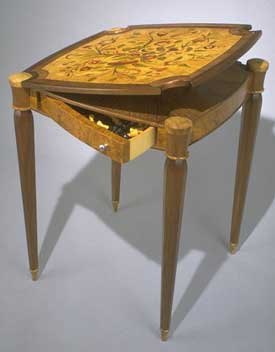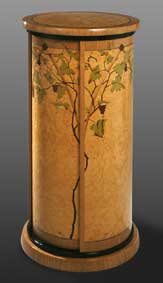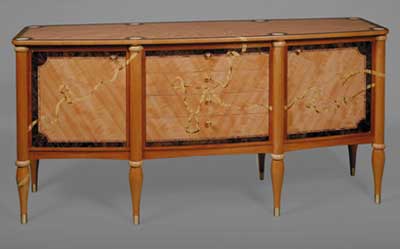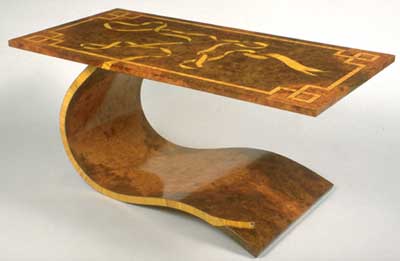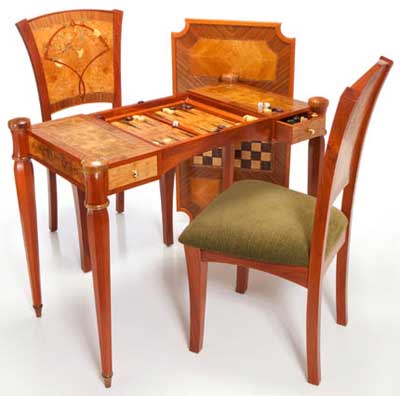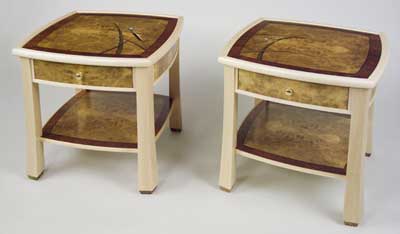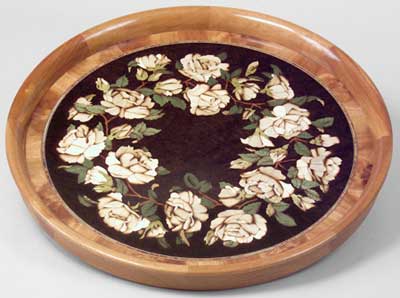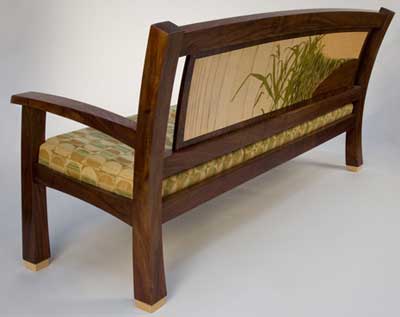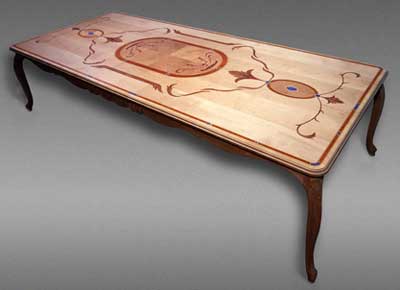
Paul Schürch’s woodworking career has been an eclectic one, incorporating stints of piano and organ building, housing construction and boat building, but for the past several years, he’s found his passion in the old art of marquetry.
“Once you’ve tasted marquetry, it’s really hard to let it go,” Paul said – and that’s what happened to him when a decorator asked if Paul knew how to build an inlaid dining table. “As a woodworker, you say, ‘of course!’ and then go home and try to figure it out.”
Six months later, still working on that table, Paul remained intrigued by marquetry, but convinced there had to be a better way to do it. “Most of the literature was very contradictory, and I was suspicious because it all contradicted each other,” he said. “I thought I’d go back to Italy, and do it right.”
Having previously received European training in piano and organ building, Paul was no stranger to learning Continental ways of woodworking. He did discover, however, upon his return to the U.S. after receiving advanced training in inlay and marquetry in northern Italy, that the technique he’d learned was not the same as that used by other contemporary American marqueters.
There are about six core marquetry techniques, Paul said, with each having its own variations. While marqueters like Silas Kopf and Marc Adams use the double-bevel or “conical cutting” method, Paul was trained in and prefers the straight blade packet cutting and contour cutting technique with a scroll saw. The key difference in this technique is the ability to stack and cut up to 16 layers of veneer at a time, rather than two layers as in conical cutting. Paul considers straight blade packet cutting simpler, faster, and easier to work with for artistic interpretation and for multiple series production work. He also cuts out veneer pieces using a large 1-1/2″ chisel as a knife that rides against a cardboard template. This method, called “knife cutting,” is used primarily in decorative or geometric pattern veneer work.
Paul has explained this process he uses in some DVDs he’s made to pass his knowledge and experience along to others, in part because, out of the 20 businesses in the area of Italy where he originally studied marquetry, only two are still operating. Paul also teaches courses at a variety of woodworking schools, an aspect of his business he expects to increase in the future.
For now, though, he’s still spending more than half his time building furniture. “When I’m engrossed in building a piece, it’s my favorite piece at the moment: there is no past; there is no future. I’m working 100 percent on that piece.” When he’s finished, although he might feel some pride of accomplishment in pieces like game tables or his spinning cabinet, Paul has no qualms about selling those pieces. “I don’t really like living with my furniture. That’s work for me. When I’m finished with a piece, I want to see it go out of my shop for somebody else to enjoy.”
While he likes mahogany as a furniture wood due to its stability, when it comes to veneer species for his marquetry, Paul will use almost any of the approximately 125 species of commercially milled veneer to which he has access – although he does try to avoid redwood burl, which he finds too soft, and ebony, because it’s too hard – Paul describes it as a “cantankerous and opinionated wood. It doesn’t like being glued, it cracks and is brittle.”
That said about ebony, Paul notes that it’s the stone, such as lapiz lazuli and mother of pearl, he also uses in his inlay that presents more of a challenge than the wood. “You can push wood, make it plastic and malleable. Stone doesn’t work that way. If you push stone, it will break. My job is to protect it, to glue it in the proper way to stand the test of time.”
What might that proper way be? Paul’s philosophy, and what he teaches his woodworking students, is that “there are generally three answers to any given question on a technique. The only way that is wrong is one that doesn’t yield the result you want, is unsafe, or takes way too long.”
